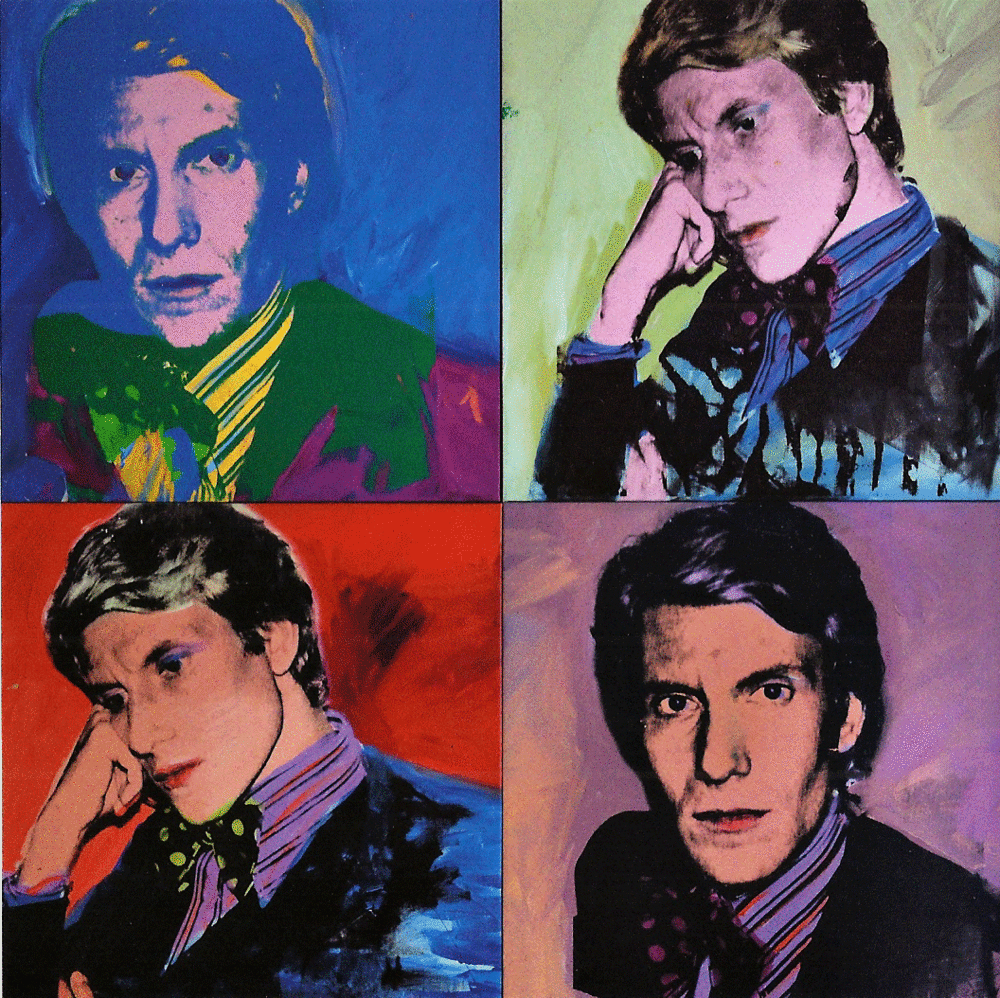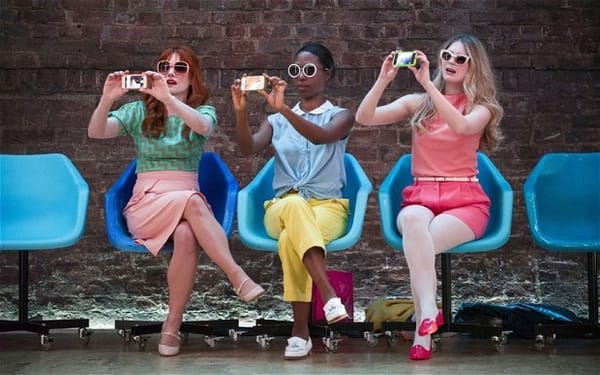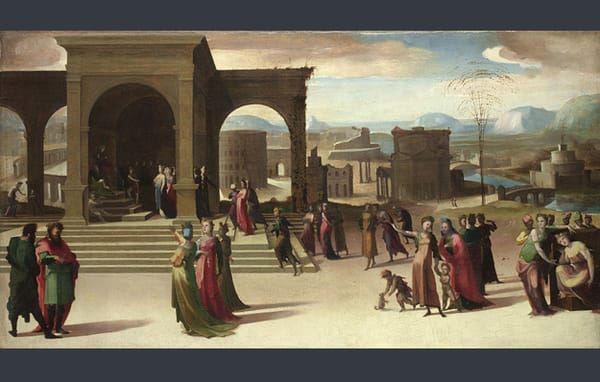When Art and Fashion Collide
An Exploration of the History of the Relationship Between Fine Art, Fashion, and Commerce by Fred Fyles

2012 was a good year for Japanese artist Yayoi Kusama. With a career that spans more than six decades, and ranges from painting to performance art, her hard work was rewarded with not just one, but two retrospectives, held on either side of the Atlantic. The Whitney Museum in New York City played host to a number of her polka-dotted creations, while the Tate Modern’s exhibition proved to be one of the highlights of that summer.
Not only did she garner critical acclaim that year, but she also released a range of handbags and accessories in collaboration with fashion brand Louis Vuitton, a somewhat odd move for an artist who was so crucial for the formation of the Feminist Art movement. The price for one of these customised handbags? $3,600. While the price may make you screw up your eyes, you can console yourself with the fact that in 2008 one of her works sold at Christie's for $5.1 million, setting a record for living women artists. But even if the bag represents a good deal in comparison, it – along with many other such collaborations – leaves a bad taste in my mouth.
In order to understand the relationship between artists and fashion designers, a meshing of ideas that can be both symbiotic and destructive, we need to go back to the swinging sixties. 1965 in particular; the year that French designer Yves Saint Laurent released his celebrated ‘Piet Mondrian’ dresses that went on to define an era. Taking their inspiration from the Dutch founder of Neoplasticism, Saint Laurent stitched together patches of colourful wool jersey, separated by thick black lines, evoking modern masterpieces. However, as much as people may laud this as the beginning of collaboration, Mondrian died in 1944, when young Saint Laurent was only eight. In actuality, he was merely ‘inspired’ by the paintings of Mondrian, and no formal collaboration took place.
Fast-forward to 1974, and we find Yves Saint Laurent tangled up in another collaboration, this time more authentic. It was this year that Andy Warhol, whose involvement in the world of fashion and industry was almost a given, created a silk screen painting of Saint Laurent, pensively staring out of the canvas in candy-floss tones. From then on the die was cast, and the worlds of fashion and fine art aligned, coming closer and closer, until they seemed to spectacularly crash together.
By the 1990s the line between creativity and commercialism was destroyed – perhaps thanks to the legacy of Thatcher’s economic policies – making art as disposable as quick fashion; evidence of cultural awareness was no longer about what you read, but what you wore, and artistic appreciation became as simple as buying a new coat.
It is difficult to find anyone who encapsulates this trend better than Damien Hirst, that enfant terrible 90s hangover, whose work manages to be both ‘aggressively confrontational’ and still completely marketable.
Last year saw a collaboration between Hirst and the fashion house Alexander McQueen, resulting in a range of scarves costing up to £715. And yet this is not the worst example of the gaucheness of Hirst’s output; that dubious honour would belong to his relationship with Beck’s Beer, for whom he designed a special edition bottle in 1995 as part of their Art Label campaign. The campaign was launched in 1987, with the first label designed by British duo Gilbert & George; what did Beck’s do to deserve this fine honour? They sponsored a retrospective at the Hayward Gallery that same year. The relationship between art and industry is so obvious it would almost be amusing.
It was not just Gilbert & George and Hirst who took up the mantle of Beck’s. Numerous artists, including a contingent of the YBA group – Tracey Emin, Rachel Whiteread et al – agreed to design labels for the bottle, and in the process reduced fine art – quite literally – to a consumable. I understand that the artists have a right to choose what art they make, and with whom, but these kinds of things still leave me feeling angry. It’s a gut reaction, something that happens when I see such blatant cheapening of what I love.
I feel like everyone should be able to have access to art, but not through a beer bottle. It is especially jarring when such schemes do little to help anyone bar the artist and the industry. I’m not suggesting that Emin gives up her entire income; after all, her dedication to the cult of mammon is well documented: as well as very public declarations in favour of the Conservatives and against high tax rates, Emin owns properties in London, St Tropez, Miami, and NYC. Such behaviour should therefore not be surprising.
Not all collaborations are bad. Some, though far from all, help to raise money for philanthropic causes. An example would be the relationship between the Keith Haring Foundation and Tommy Hilfiger, who in 2010 designed a series of trainers featuring prints by the late American artist. The proceeds went to the Foundation, which provides grants for children in need and those affected by HIV/AIDS, the disease that eventually went on to kill Haring in 1990. In essence, such projects are no different to those in other disciplines, such as the Red Hot CDs, which also raise money for HIV/AIDS, and whose latest release draws on the work of American musician Arthur Russell. Both help to promote charity, and perhaps expose more people to works of art they would otherwise never see.
However, one of the main problems that I have with the issue is the way it contributes to the commercification of fine art. Walter Benjamin, writing in A Small History of Photography, talks about the ‘aura’ of art, a term that refers to its fetishization within culture. A work of art exists only in one place, and can only be seen in that place at any one time – this uniqueness within space and time means that the work of art is not accessible to the masses, and therefore becomes desirable.
You may argue that the relationship between art and industry helps break down this aura. After all, by releasing a range of designer handbags, Kusama ensures that her work is not only present in galleries, but also out on the streets! This view, although optimistic, is also naive, ignoring the economic aspect of such collaborations. The vast majority of works produced in these processes are extortionately expensive, following the idea of ‘purchase equals pleasure’ fundamental to a capitalist economy. Rather than a democratisation of art, instead what happens is culture, by and large, remains accessible only to a select few, a plutocracy, operating in the upper echelons of commerce.
So why do I feel this way about artists, and not other disciplines? Why is it that the idea of Jeremy Deller, last year chosen to represent the UK at the Venice Biennale, designing the interior of a Louis Vuitton store in 2009 makes me roll my eyes, but architects get a free pass designing the exterior? Perhaps it is because such a relationship seems inevitable. Fashion houses have always needed stores; physical spaces in which, if their goods are not sold, they can at least be admired by those who can’t afford them (think of the sheer amount of glass plating used by the fashion industry).
If someone has to design these buildings, it might as well be a good architect. Zaha Hadid’s Chanel Pavillion, designed in 2008 and resembling a low flying cloud, is just as beautiful as her other buildings; Herzog and de Meuron's 2003 Prada store in Tokyo is undeniably a beautiful building, with its criss cross patterning and bulging glass facade. The building as a structure can be honest, even if what is contained inside is not.
Similarly, photographers seem to pose less of a problem for me. When Cindy Sherman collaborated with Comme des Garcons in 1995 it didn’t seem like a big transgression, but rather a natural extension of her work. Similarly, Juergen Teller’s 16 year collaboration with Marc Jacobs can be seen as a source of art, even if his bright, high-flash style has since been tainted by Terry Richardson, the high priest of sleaze.
The crux of the issue for me comes down to inevitability: the relationship between architects or photographers and fashion houses seems like a direct consequence of their structure. The house creates garments, images of which need to be circulated around society, whether that is through print or digital media; similarly, a space is needed in which to present the objects, and the building itself is a neutral construction. But there’s no necessity for artists to do this. The artists who do so would still be able to pay the bills if they refused – it is not a case of do or die. Through expanding their bank balance they destroy the beauty and importance of art; a Yayoi Kusama print becomes something to stitch into clothes; a George Condo canvas mutates from a terrifying, neo-surrealist nightmare into decor for a Birkin bag. Art becomes just another commodity, to be consumed, digested, and ultimately thrown away.








